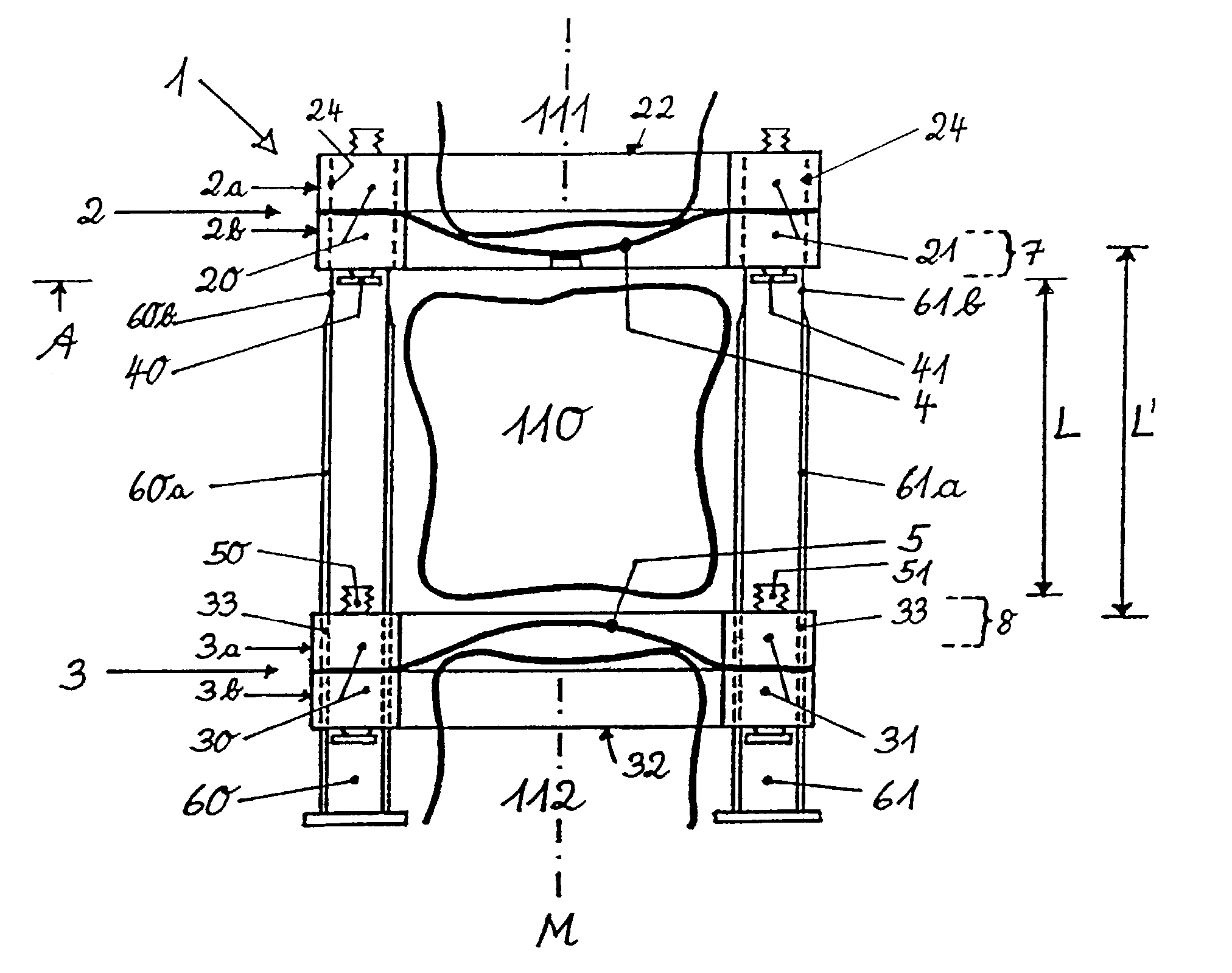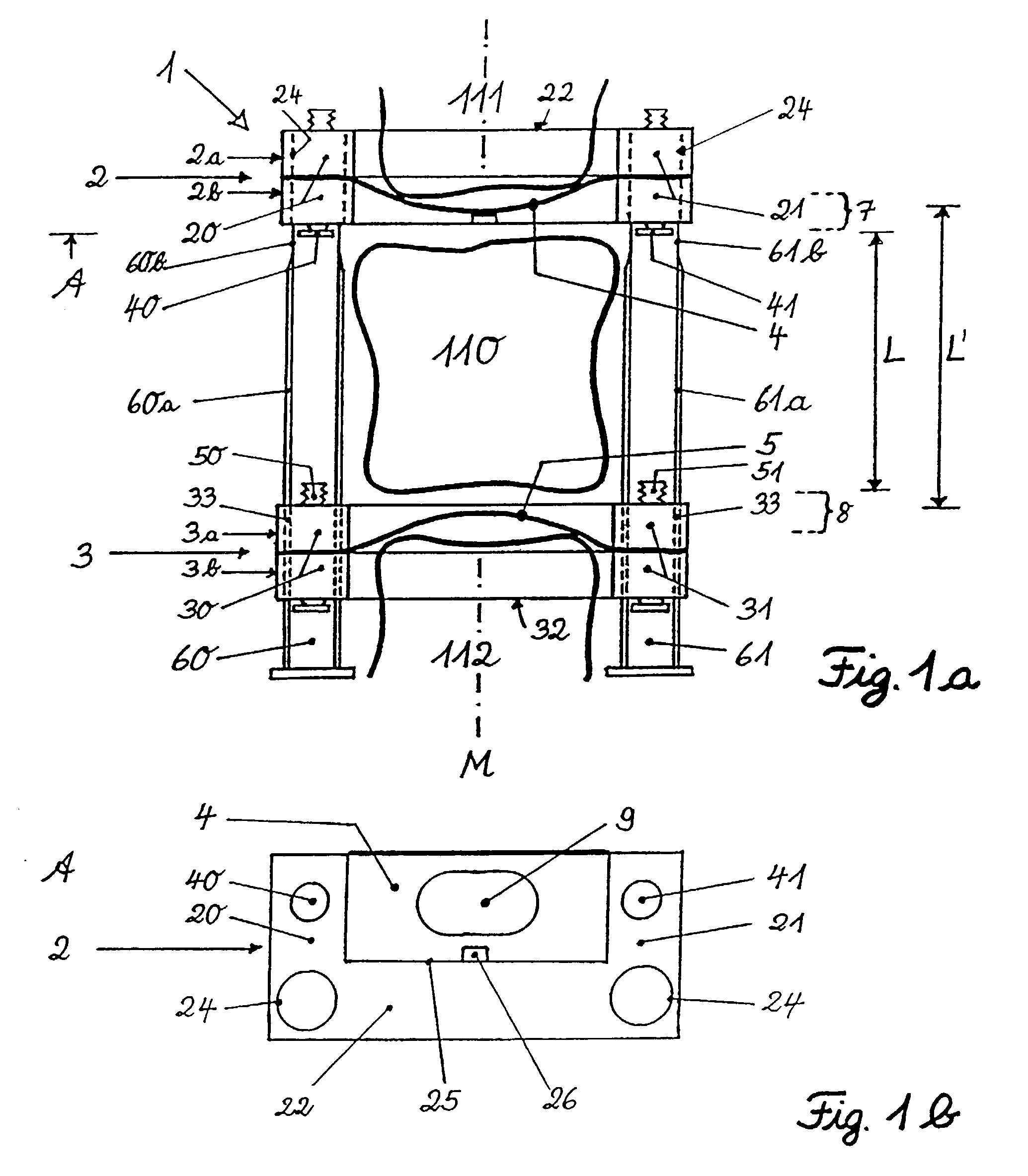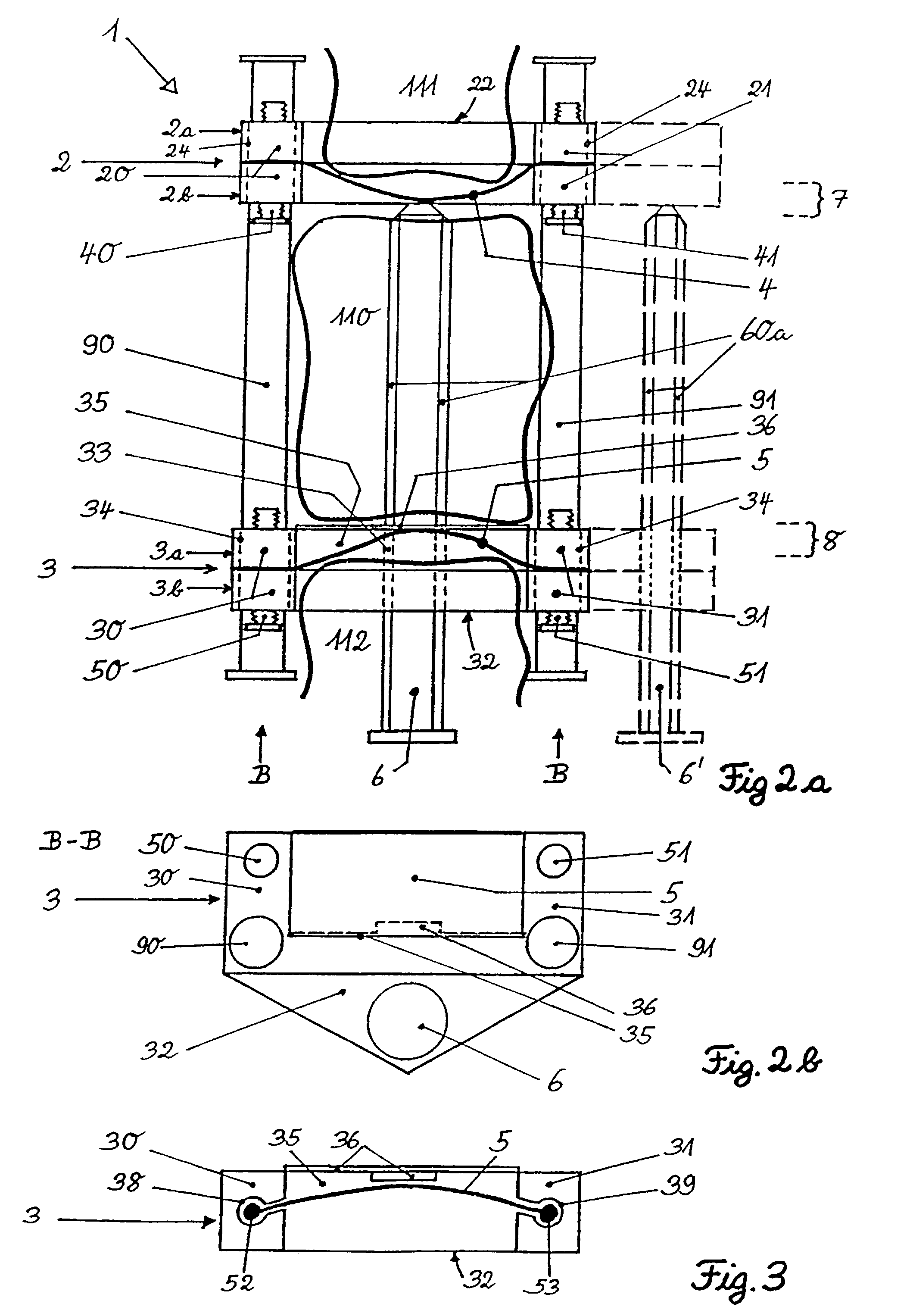Atraumatic approximal space dilator
a technology of approximal space and dilator, which is applied in the field of traumatic approximal space dilator, can solve the problems of dental enamel injury, no longer accessible for treatment, and use of wedges
- Summary
- Abstract
- Description
- Claims
- Application Information
AI Technical Summary
Benefits of technology
Problems solved by technology
Method used
Image
Examples
Embodiment Construction
[0015] According to the FIGS. 1a, 1b, 2a, 2b and 3 the dental device 1 for a dilating of a interdental space 7, 8 between teeth 110, 111, 112 structured in accordance with the invention is characterized by two interdental matrices 4, 5 for an insertion into interdental spaces 7, 8, two retaining means 2, 3 for a retaining of interdental matrices 4, 5 and a spacer device 6, 6', 60, 61, 60b, 61b, 90, 91 adapted to push the retaining means 2, 3 apart and to guide them to move parallel. A distance between the interdental matrices 4, 5 is adjustable at the spacer device 6, 6', 60', 61, 60b, 61b, 90, 91 within a range of at least one up to more than one tooth length L. Below, some embodiments are disclosed.
[0016] The interdental matrices 4, 5 can be releasably mounted at the retaining means 2, 3. By means of this, worn matrices 4, 5 or matrices 4, 5 for specific applications, e.g. matrices of a different material, of various thicknesses or of different shapes may easily be exchanged, and ...
PUM
 Login to View More
Login to View More Abstract
Description
Claims
Application Information
 Login to View More
Login to View More - R&D
- Intellectual Property
- Life Sciences
- Materials
- Tech Scout
- Unparalleled Data Quality
- Higher Quality Content
- 60% Fewer Hallucinations
Browse by: Latest US Patents, China's latest patents, Technical Efficacy Thesaurus, Application Domain, Technology Topic, Popular Technical Reports.
© 2025 PatSnap. All rights reserved.Legal|Privacy policy|Modern Slavery Act Transparency Statement|Sitemap|About US| Contact US: help@patsnap.com



